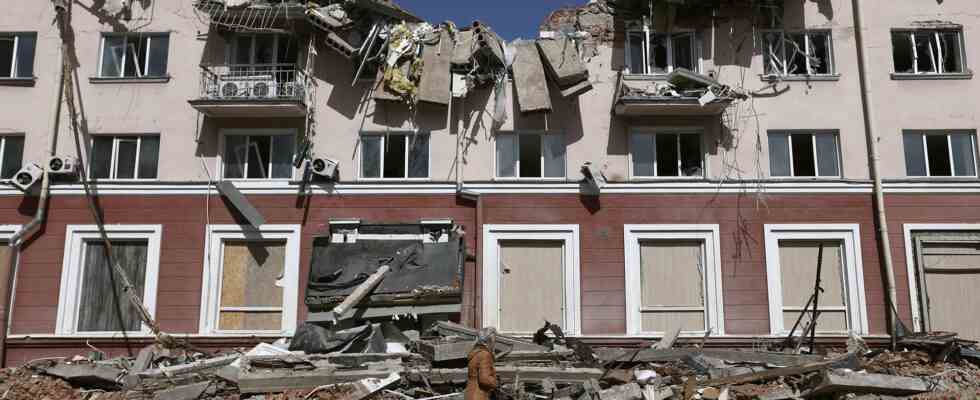Status: 01/17/2023 03:23
Whole parts of the city have been destroyed in Ukraine since the start of the Russian war of aggression, and reconstruction is likely to take years and be expensive. A research team from Zurich shows how recycled concrete can help.
Even if the construction industry cannot do without concrete: The building material, which the Romans already used, has an image problem today – because of its climate damage and the immense consumption of resources. Scientists have therefore been researching how to recycle concrete since the 1990s. Compared to the production of new concrete, recycling cannot reduce CO2 emissions, but the amount of building material required can, according to Professor Ueli Angst from the Swiss Federal Institute of Technology (ETH) in Zurich.
You save yourself the procurement of rocks because you get them from the demolition material. “And because the rock content makes up between 60 and 80 percent of the concrete, that has a big leverage,” says Angst. A large proportion of the rock can be replaced with the processed broken concrete – from a resource point of view, this is an advantage.
Ukrainian chemist on the team
Concrete is a so-called composite material. In other words, it consists of cement, rocks and water. Recycling concrete means reusing the rocks from destroyed or demolished structures and thus contributing to the circular economy.
That’s why the ETH research team, which also includes the Ukrainian guest scientist Viacheslav Troian, investigated how recycled concrete could be used to rebuild the devastated Ukraine, explains Troian. Before the war, the chemist worked at the National University of Civil Engineering and Architecture in Kyiv. His specialty: different types of concrete.
Researchers at the ETH in Zurich hope that knowledge of recycled concrete will help post-war Ukraine to rebuild.
Image: REUTERS
“Findings also interesting for other countries”
According to Troian, the research is new and of particular interest to Ukraine. “Above all, we have looked closely at how the individual components of the recycled concrete have to be processed and mixed so that the material has a good and durable quality. And these findings are also of interest to other countries.”
Because the mixture of the concrete components is the be-all and end-all when it comes to recycled concrete. The researchers assume that up to 50 percent of the rock can be replaced with recycled material. This is not a small amount and would significantly relieve Ukraine’s reconstruction effort: the use of debris means that less building material has to be purchased and the building materials are already on site. However, that is not as easy as it sounds, emphasizes concrete researcher Angst.
Effort depends on the material
The large-format demolition material must first be broken up into smaller chunks and grains. “And then you take this broken material, mix it with new cement and new water and make new concrete out of it,” says Angst.
It is not possible to say in general terms how much effort the demolition material has to be reprocessed in order to optimally bond to new concrete – it depends on the type of demolition material. Because it often contains old cement mortar, and that makes the recycled concrete less stable than the conventional one. Because cement mortar absorbs more water and causes cracks to form. In order to avoid this, the researchers are experimentally checking which building material has to be processed before it can be made into new, high-quality concrete, according to chemist Troian.
“Efficient and practical solution”
Various methods have been established for this in recent years – for example with acid or with heat – but they all cost a lot of money. “We have now found that it is quite sufficient to wet the demolition material with water before it is processed into new concrete. And that is a very simple way, but for a devastated country it is actually an efficient and practical solution,” explains Troian .
Around 18 percent of all concrete buildings in Switzerland, where scientists conduct research on the subject, are made from recycled concrete. This makes Switzerland the European leader in this field. The ETH researchers are happy to support their Ukrainian colleague Troian with the joint research. And they hope that knowledge of recycled concrete will help post-war Ukraine to rebuild.

